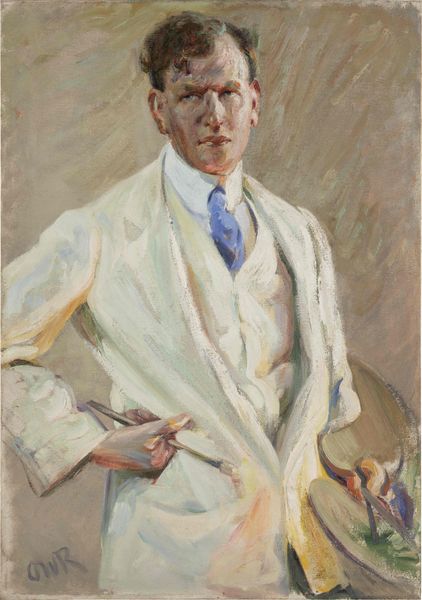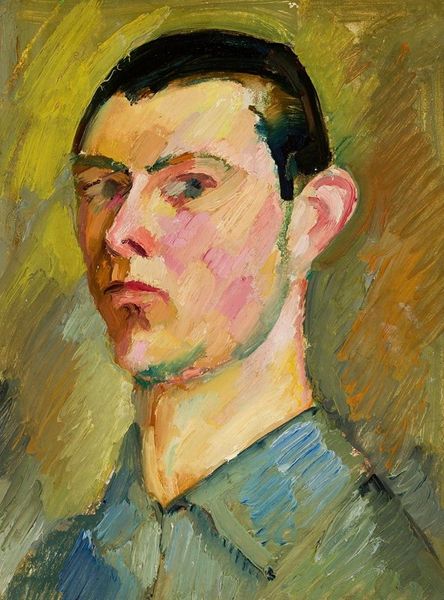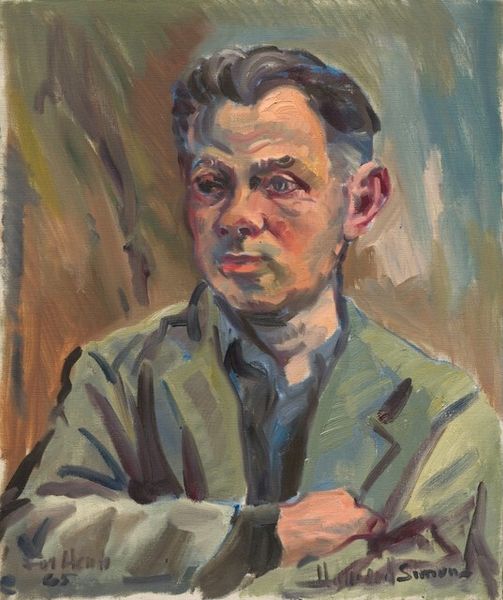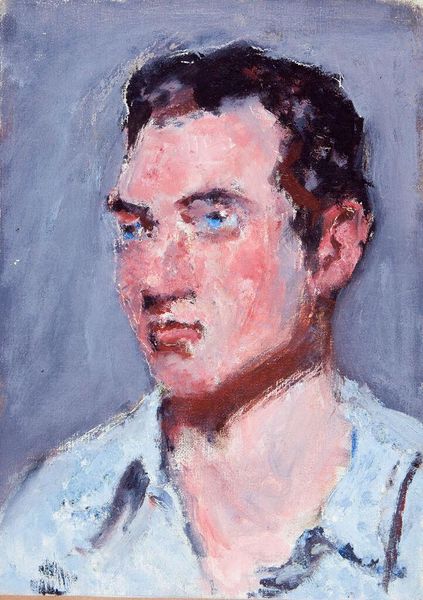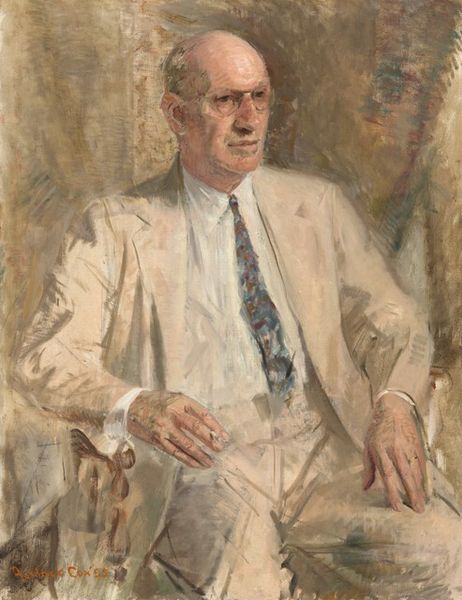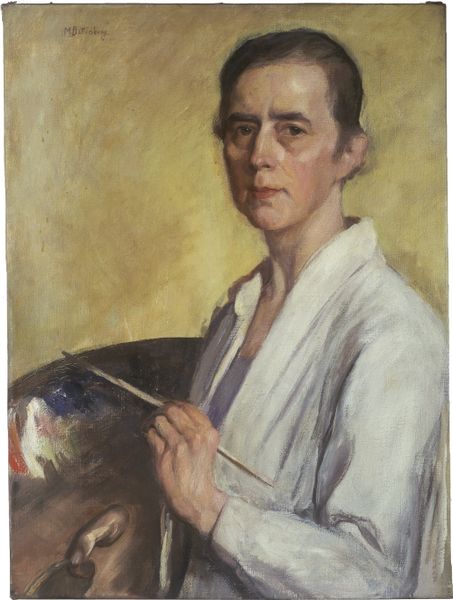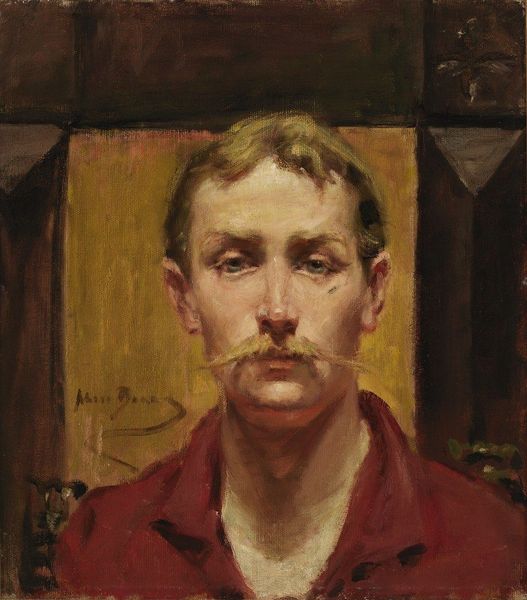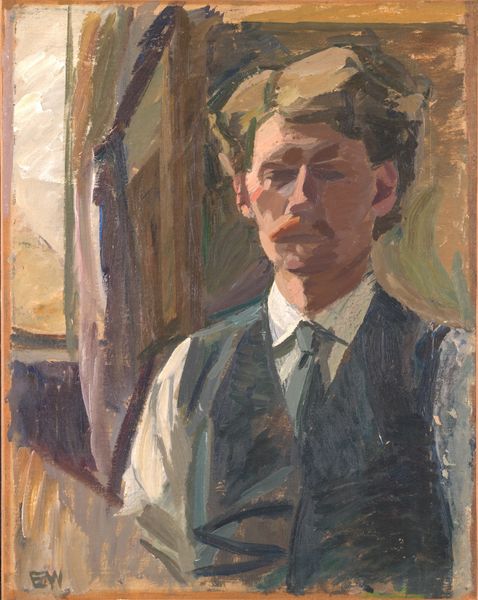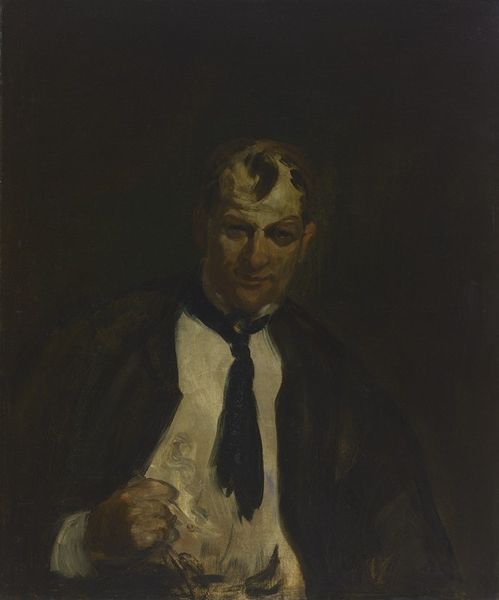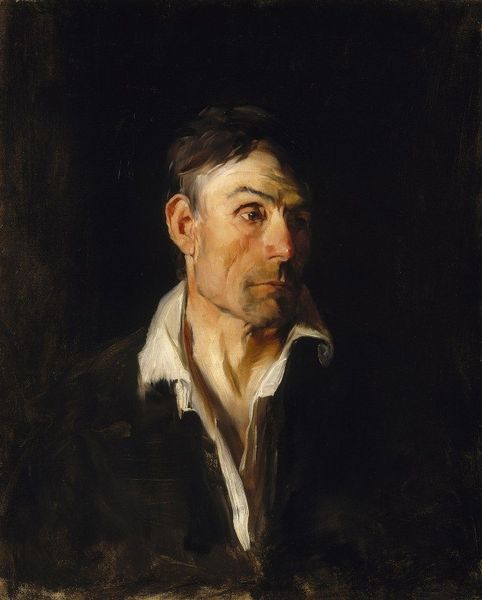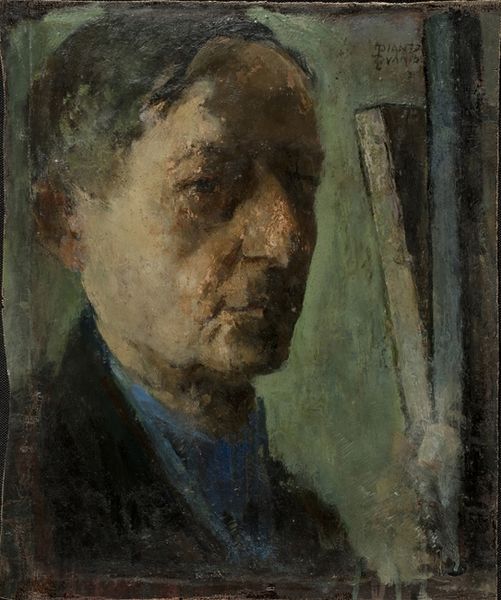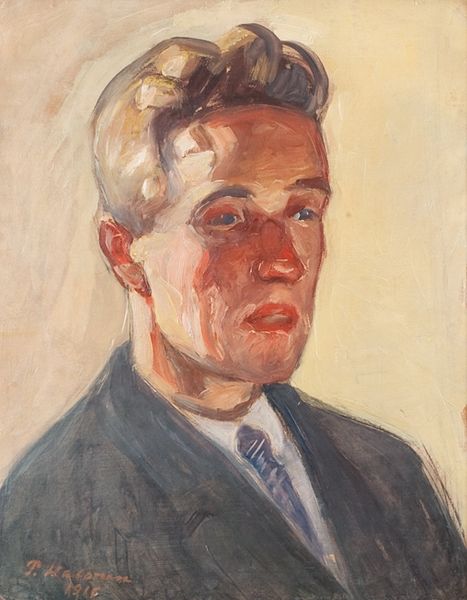
Copyright: Public Domain: Artvee
Editor: Here we have William Glackens’ "Self-Portrait" from around 1935, rendered in oil paint. I'm immediately struck by the tangible texture created by the brushstrokes. What's your take on it? Curator: Considering this “Self-Portrait” through a materialist lens draws attention to the very labor and physical process embedded within the work. We can observe the artist representing himself in the act of creation. He offers not just an image of the self, but of the self at work. Editor: So, the painting highlights the activity of painting, more than the painter’s persona? Curator: Precisely. We must look at the means of production here: the specific consistency and application of oil paint, the implied gestures and bodily actions required to bring the painting into existence. Note the brushwork; how the facture becomes just as significant as the representation of the artist himself. The labor and materiality are laid bare, democratizing the artistic process and pushing against a concept of art divorced from everyday practice. Do you think the artist intended a focus on process? Editor: Perhaps. It almost feels like an embrace of work – manual, skilled labor – in a time when rapid industrialization was changing work’s meaning. Curator: Exactly! By portraying himself holding a brush and palette, he foregrounds artistic creation as tangible work, connecting him to the broader working class experience, and blurring boundaries of high art and ‘common’ occupations. Editor: That gives me a whole new way to consider self-portraits! Thanks. Curator: A focus on materiality can always open new viewpoints!
Comments
No comments
Be the first to comment and join the conversation on the ultimate creative platform.
